Disclosure: This article contains affiliate links. We may earn a commission from purchases at no extra cost to you, which helps our travel content.
Growing up in an Indian-American household in Raleigh, Delhi always existed as a collection of my parents' nostalgic stories—vibrant markets, ancient traditions, and the constant hum of life. But experiencing it firsthand as an adult? That's a different kind of magic altogether. As a nurse who's witnessed the beautiful intersection of traditional and modern medicine across Southeast Asia, returning to my ancestral homeland felt like completing a circle. This past winter, I took a week to explore Delhi beyond the typical tourist trail, seeking out healing traditions, cultural immersion, and those special corners where ancient wisdom meets contemporary life. What I discovered was a city of contradictions—chaotic yet meditative, traditional yet progressive—that offers budget travelers an incredible wealth of experiences if you know where to look. Join me as I guide you through the hidden corners of Delhi where couples can forge deeper connections with each other and with a culture that has been nurturing body and soul for millennia.
Navigating Old Delhi's Labyrinth: A Sensory Adventure
Old Delhi doesn't just invite you in—it pulls you by all five senses into its centuries-old embrace. My partner and I decided to skip the typical tourist-filled morning hours and instead ventured into Chandni Chowk after 3 PM, when the crowds thin slightly but the energy remains electric.
The narrow galis (alleyways) of Chandni Chowk tell stories that guidebooks can't capture. We wandered through Khari Baoli, Asia's largest spice market, where mountains of turmeric, cardamom, and star anise create a fragrant tapestry that's both overwhelming and intoxicating. As a nurse who's studied how these spices are used in traditional medicine, I was fascinated by the vendors who could prescribe specific blends for everything from joint pain to digestive issues.
For an elevated perspective (literally), seek out Haveli Dharampura. This restored mansion offers a rooftop view where you can watch the chaos of Old Delhi unfold beneath you while sipping masala chai. The juxtaposition of ancient domes, electrical wires, and kite-flying children creates a living portrait of Delhi's complexity.
Rather than trying to see everything, we chose to experience one small area deeply. We booked an early evening walk with Delhi Food Walks, which took us through hidden food stalls serving recipes unchanged for generations. Our guide Rahul introduced us to the family behind Karim's, who have been perfecting their nihari since 1913. The slow-cooked meat stew isn't just delicious—it's prepared with healing spices that warm the body during winter months.

💡 Pro Tips
- Visit Old Delhi after 3 PM to avoid the most intense crowds but still experience the vibrant atmosphere
- Carry small denominations of cash for street food and small purchases
- Wear comfortable closed-toe shoes that you don't mind getting dirty—the streets can be uneven and messy
Healing Traditions: Ayurvedic Experiences on a Budget
As a nurse who's constantly bridging traditional and modern healthcare approaches, Delhi's ancient wellness traditions fascinated me on both personal and professional levels. What surprised me most was how accessible these experiences can be for budget travelers.
Start your wellness journey at Kairali Ayurvedic Centre in Lajpat Nagar, where an initial consultation with an Ayurvedic doctor costs roughly 500 rupees (about $6 USD). The doctor assessed our doshas (mind-body constitutions) and recommended specific treatments. My partner and I splurged on a synchronized abhyanga massage—where two therapists work in perfect harmony—for 2,500 rupees each. It was our one indulgence, but worth every rupee for the stress relief and connection to a 5,000-year-old healing tradition.
For a free immersion into traditional healing, visit the Lodhi Garden early morning (around 6 AM) to join locals practicing yoga and pranayama breathing exercises. We brought our travel yoga mat which was perfect—lightweight in our luggage but grippy enough for outdoor practice. The morning mist among ancient tombs creates an atmosphere that no studio can replicate.
The National Crafts Museum houses an extensive collection of medicinal plant displays and traditional healing implements. For just 20 rupees entrance fee, you can explore how different regions of India approached healthcare before modern medicine. What struck me was how many of these plant-based remedies have been validated by contemporary research—turmeric's anti-inflammatory properties, neem's antimicrobial effects, and ashwagandha's stress-reduction capabilities are all being studied in clinical settings now.

💡 Pro Tips
- Book Ayurvedic treatments at least one day in advance, especially during winter when they're popular
- Respect the traditional nature of these practices—they're healthcare systems, not tourist attractions
- Stay hydrated after treatments to help flush toxins—Delhi's dry winter air makes this especially important
Hidden Cultural Corners: Beyond the Tourist Trail
Delhi's lesser-known cultural spaces offer the most authentic glimpses into local life. As someone who's always found malls to be fascinating cultural microcosms, I was intrigued by Delhi's shopping centers—but not the glossy ones catering to tourists.
Instead, we ventured to Dilli Haat, an open-air market organized by the government to support artisans from across India. Unlike other markets where haggling is expected, prices here are fixed but fair, and the quality is guaranteed. I found gorgeous block-printed scarves for 300 rupees that would easily cost $50 back in Sydney. What makes this place special is the rotating roster of craftspeople who demonstrate their techniques—we watched a Madhubani painter create intricate mythological scenes using natural pigments and tiny brushes.
For a truly local experience, head to Majnu ka Tilla, Delhi's Tibetan refugee colony. This compact neighborhood feels like stepping into Little Lhasa, with prayer flags fluttering above narrow lanes lined with shops selling Tibetan medicines, handicrafts, and some of the best momos (dumplings) in the city. The Winter Garden Café became our regular breakfast spot, where butter tea and fresh bread cost less than $2 per person.
One of our most memorable evenings was at Sunder Nursery, a recently restored 16th-century heritage park. On Thursday evenings, they host community music circles where anyone can join in. We found ourselves sitting cross-legged on the ground as the winter sun set, listening to amateur musicians play everything from classical ragas to fusion pieces on traditional instruments. The experience costs nothing but offers a priceless window into contemporary Delhi culture.
For couples seeking a uniquely romantic experience, book an evening heritage walk through Mehrauli Archaeological Park with Delhi Walks. With over 100 historically significant structures spanning 1,000 years of history, this lesser-visited park becomes magical at sunset. Our guide Priyanka shared not just historical facts but the love stories and legends that bring these ancient stones to life.

💡 Pro Tips
- Visit Dilli Haat on weekdays to avoid crowds and have more meaningful interactions with artisans
- Carry a reusable water bottle with a good filter like water purifier bottle to stay hydrated without buying plastic bottles
- Learn basic Hindi phrases—even simple greetings open doors to warmer interactions
Segway Through History: Modern Exploration of Ancient Spaces
As a dedicated segway enthusiast who's rolled through cities worldwide, I was thrilled to discover Delhi has embraced this fun, efficient mode of transport for exploring historical sites. For couples looking to cover more ground while still enjoying an intimate experience, this is my top recommendation.
Delhi Tourism recently introduced segway tours around the sprawling Purana Qila (Old Fort) complex. For 500 rupees per person, you get a 45-minute guided tour covering far more territory than you could on foot. The winter months are perfect for this activity—Delhi's notorious heat is absent, and the crisp morning air makes gliding past 16th-century architecture even more magical.
What I love about exploring by segway is how it creates a perfect middle ground between walking (which limits your range) and driving (which disconnects you from the environment). You still feel the gentle winter breeze and hear the sounds of history around you, but you can cover the expansive grounds without exhaustion.
For those new to segways, don't worry—the tours begin with a 10-minute training session, and the learning curve is surprisingly gentle. My partner had never tried one before but was confidently navigating the pathways within minutes. The guides are knowledgeable about both the historical significance of the sites and the best angles for couple photos against the stunning Mughal architecture.
While most visitors crowd the more famous Red Fort, Purana Qila offers equally impressive history with a fraction of the tourists. The segway route takes you around the massive walls, through ornate gateways, and beside the tranquil lake where couples can pause for reflection. Our guide shared that many local Delhi couples come here for pre-wedding photoshoots, and it's easy to see why—the combination of ancient grandeur and natural beauty creates a romantic backdrop that feels timeless.
Pro tip: Book the first tour of the day (usually 8:30 AM) when the fort is at its quietest and the light is perfect for photographs. Bring your own action camera with a head strap to capture your journey—the rental company allows these as long as you're careful.

💡 Pro Tips
- Wear comfortable closed shoes (no sandals allowed on segways)
- Arrive 15 minutes before your scheduled tour for the safety briefing and practice session
- Book online through the Delhi Tourism website to secure spots—they limit group sizes to maintain quality
Culinary Medicine: Healing Foods of Delhi Winter
Delhi's winter cuisine isn't just delicious—it's medicinal. As a nurse, I've always been fascinated by how traditional cultures use food as preventative healthcare, and nowhere is this more evident than in Delhi's seasonal winter offerings.
Gajar ka halwa (carrot pudding) isn't just a dessert—it's warming medicine. Made with ghee (clarified butter), carrots, milk, nuts, and cardamom, this sweet treat boosts immunity during cold months. The best version we found was at Chaina Ram in Chandni Chowk, where a small portion costs just 60 rupees but delivers both comfort and vitamin A in abundance.
For couples looking to share healing experiences, nothing beats gathering around a sigdi (traditional coal heater) at Kuremal Mahavir Prasad Kulfiwale. This 100-year-old establishment serves stuffed kulfi (dense ice cream) in hollowed-out fruits. While eating frozen desserts in winter might seem counterintuitive, the saffron and dry fruits incorporated in their recipes are considered warming foods in Ayurveda that strengthen the respiratory system—particularly important in Delhi's winter pollution.
One of our most memorable meals was at Bhaja Govindam, a simple eatery near Jama Masjid that serves sattvic food (pure vegetarian cuisine prepared according to Ayurvedic principles). For less than $5 per person, we enjoyed a thali (platter) featuring seasonal vegetables, millet breads, and warming lentil preparations. The owner explained how each component was designed to balance the body during winter—the ginger-infused dal to improve circulation, the turmeric vegetables to fight inflammation, and the jaggery-sweetened dessert to provide sustained energy.
Street food tours abound in Delhi, but for a more intimate experience, we booked a home cooking class through Traveling Spoon. We spent an evening with Tanushree, a home cook who specializes in seasonal Delhi cuisine. She taught us to make sarson ka saag (mustard greens) and makki di roti (cornbread)—a classic winter combination that delivers iron, vitamins, and warming properties. The best part was learning about her family's food traditions while preparing dinner together—a bonding experience that deepened our connection to both Delhi's culture and each other.
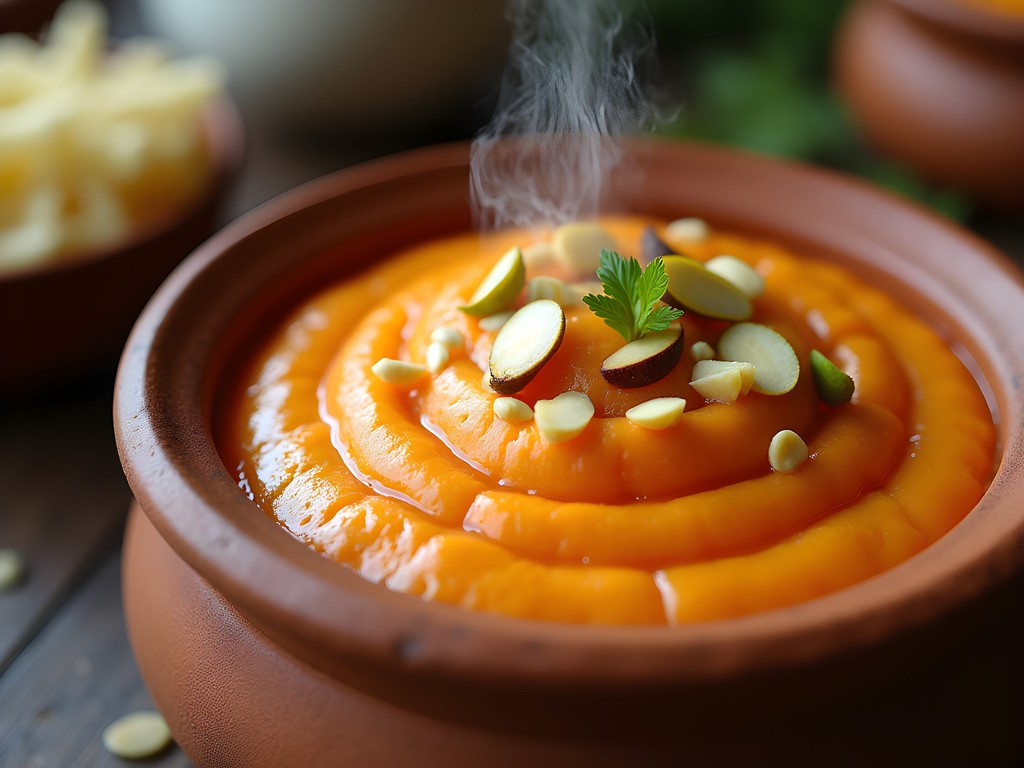
💡 Pro Tips
- Eat seasonal foods to support your immunity—winter vegetables like carrots, mustard greens, and sweet potatoes are particularly nourishing
- Look for establishments filled with locals rather than tourists—they know where the authentic healing foods are found
- Stay hydrated with warming liquids like masala chai and kadha (herbal tea) rather than cold drinks, even when temperatures are mild
Final Thoughts
As I boarded my flight back to Sydney, my hands still faintly stained with henna from a spontaneous street-side application, I realized that Delhi had offered far more than a typical travel experience. It had provided a reconnection—to my ancestral roots, to ancient healing wisdom that complements my nursing knowledge, and to a way of experiencing culture that feels both authentic and accessible. Winter in Delhi isn't just about avoiding the scorching heat of summer; it's about witnessing a season when the city turns inward, embracing traditions of wellness and community that have sustained its people for centuries. For couples seeking deeper connection—both with each other and with a living, breathing cultural tapestry—Delhi's hidden corners offer something that luxury resorts and tourist highlights simply cannot. Pack light, bring an open heart, and allow Delhi to surprise you with its perfect balance of ancient wisdom and modern energy. The city doesn't just welcome you; it transforms you, one hidden corner at a time.
✨ Key Takeaways
- Delhi in winter offers unique cultural experiences without the crowds and heat of peak tourist season
- Budget travelers can access authentic Ayurvedic and traditional healing experiences for minimal cost
- The most meaningful connections happen in spaces where locals gather—seek out community events and lesser-known neighborhoods
- Food isn't just nourishment in Delhi—it's preventative medicine with centuries of wisdom behind each dish
📋 Practical Information
Best Time to Visit
November through February (winter)
Budget Estimate
$30-50 per day per person (excluding flights)
Recommended Duration
5-7 days
Difficulty Level
Moderate
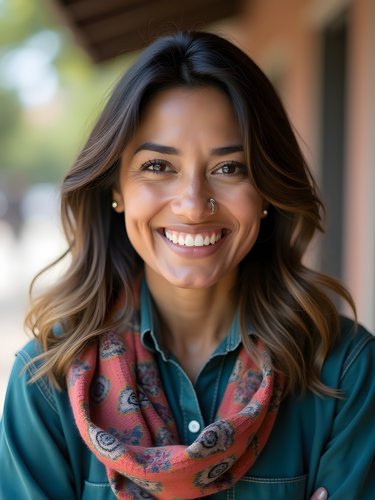


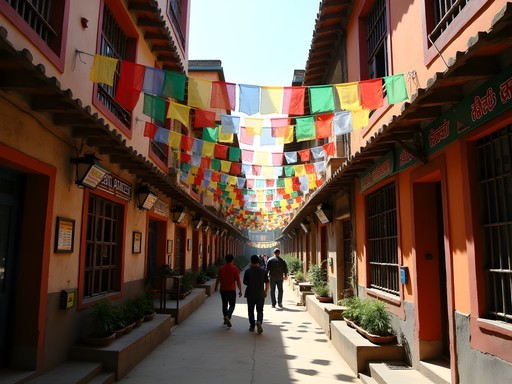




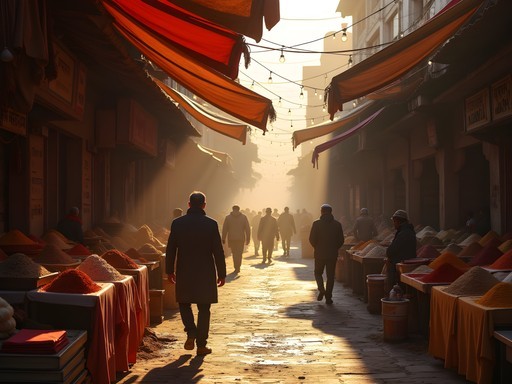
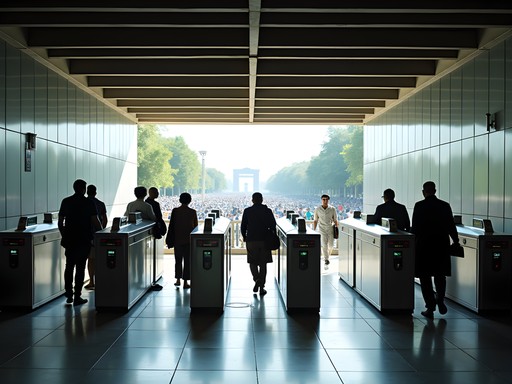

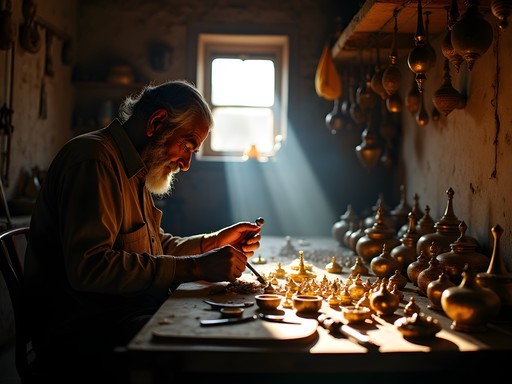
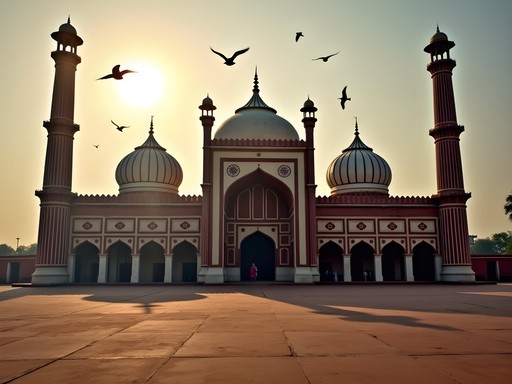
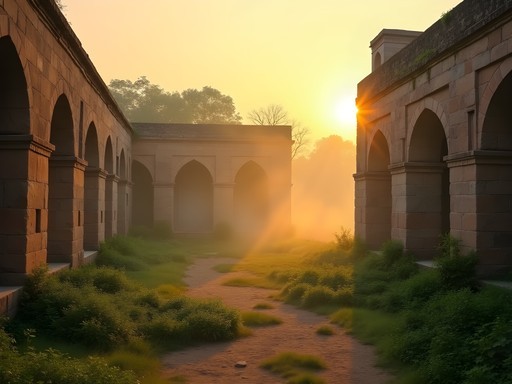


Comments
redfan
Those markets!! 😍 The colors are unreal!
coolmood
The Segway tour sounds fun but we did the cycle rickshaw through Old Delhi and it was WILD! Our driver knew all these tiny shortcuts between buildings I swear weren't even on maps. He took us to his cousin's spice shop (classic Delhi move lol) but honestly got the best saffron I've ever used. Love how Delhi mixes the hustle with these genuine human connections.
travelgal
Just got back from Delhi and used your blog as a guide! That Ayurvedic massage place you recommended near Hauz Khas was incredible and so affordable. We paid less than $20 for a 90-minute treatment that would've cost $200 back home. The owner even gave us special herbal tea after. Your tip about visiting Lodhi Gardens early morning was spot on - we saw peacocks!
hikingway
Great post! How did you handle the food situation? I've heard so many horror stories about Delhi belly but those street food photos look too good to pass up!
redfan
I went to Delhi last month and ate street food every day! My rule: go where locals go, avoid raw vegetables, and only eat at busy stalls where the food is freshly made. Had zero issues and the best meals of my life!
Mason Ferrari
Having visited Delhi annually for the past decade, I appreciate how you've highlighted experiences beyond the typical tourist circuit. Your analysis of the Ayurvedic experiences is particularly astute - most visitors miss these authentic wellness opportunities in favor of overpriced hotel spas. One point worth adding: the timing of visits to these hidden corners is crucial. I've found that the cultural pockets you mention in Nizamuddin are most vibrant during evening hours, particularly after 7pm when the qawwali sessions begin. The contrast between morning and evening Delhi is essentially experiencing two different cities. I tracked my steps during my last visit and covered 15+ kilometers daily exploring these neighborhoods. For serious explorers, I recommend comfortable walking shoes as Delhi's uneven terrain can be challenging on standard footwear.
moonadventurer
This looks amazing but I'm a total newbie. How many days would you recommend for Delhi if I want to do these hidden experiences? Is English widely spoken?
coolmood
Not OP but I spent 4 days in Delhi last year and it was barely enough! English is common in tourist areas and with younger people. You'll be fine!
journeypro
Those henna photos are gorgeous! Making me want to book a flight right now!
freewanderer
Just got back from Delhi last week and your post captures exactly what makes it special! I was nervous about navigating Old Delhi but ended up having the best day there. Found this tiny haveli that's been converted to a cultural center where I learned about Mughal miniature painting. The artist let me try it myself (I was terrible lol). Also did the Segway tour you mentioned - worth every rupee for seeing so much without dying in the heat. One thing I'd add - the early morning heritage walks in Lodhi Gardens are magical. You see locals doing yoga and the light is perfect for photos.
Lillian Diaz
Zoe, your post took me right back to my own journey through Delhi's chaotic beauty last year! That line about your hands still faintly stained with henna really hit home - I had the same experience after a spontaneous stop at a small shop in Chandni Chowk. The way you captured the contrast between ancient and modern Delhi is spot on. I especially loved your section on navigating Old Delhi's labyrinth. Those narrow gullies are intimidating at first but hold such incredible treasures! Did you try the kulfi at the corner shop near Jama Masjid? That was my daily ritual during my week there. Your Segway tour tip is brilliant - never would have thought of exploring those historic spaces that way!
travelgal
Was Old Delhi safe for solo female travelers? I'm planning a trip and a bit nervous about those crowded markets Zoe mentioned.
Lillian Diaz
I felt pretty safe during daylight hours! Just use common sense - keep valuables secure, dress modestly, and be confident. The morning hours are less crowded if you're nervous. And honestly, people were incredibly helpful when I looked lost!
dreamadventurer
How did you handle the pollution? Going in winter and a bit worried!
explorelegend
Not the author but I've been in winter - definitely bring a good mask for bad air days and check the AQI each morning. Indoor activities on the worst days!
Venture X
Premium card with 2X miles, $300 travel credit, Priority Pass